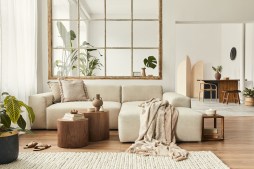How to Match Flooring Styles with Room Functionality: A Comprehensive Approach
Choosing the right flooring for your home is not just about aesthetics; it’s also about functionality and practicality. With so many options available, it can be overwhelming to decide which type of flooring suits each room best. In this article, we’ll guide you through a comprehensive approach to matching flooring styles with room functionality, ensuring that your choices enhance both the beauty and utility of your spaces.
Understanding Room Functionality
Before selecting flooring, it’s essential to consider the primary activities that will take place in each room. For example, high-traffic areas like hallways and living rooms benefit from durable materials that can withstand wear and tear. Conversely, bedrooms may prioritize comfort underfoot. Understanding these functional requirements will help you narrow down your options effectively.

Evaluating Different Flooring Options
There are several types of flooring materials available today—including hardwood, laminate, tile, vinyl, and carpet—each offering unique advantages. Hardwood provides warmth and elegance but may not be suitable for moisture-prone areas like bathrooms. Tile is ideal for wet spaces due to its water resistance but can feel cold and hard underfoot without proper rugs or heating systems. Evaluating these characteristics against the needs of each room is crucial.
Room-Specific Recommendations
For kitchens and bathrooms, opt for moisture-resistant materials such as ceramic or porcelain tile that are easy to clean. Living rooms might benefit from plush carpeting or stylish engineered wood for a cozy yet sophisticated ambiance. Bedrooms are excellent candidates for soft carpet or luxury vinyl planks that provide a warm feel while adding style. Dining rooms can showcase elegant hardwood or beautiful laminate flooring that enhances the aesthetic appeal during gatherings.
Aesthetics vs Functionality
While functionality should always be a top priority when selecting flooring materials, aesthetics play an equally important role in creating a cohesive look throughout your home. Consider how different styles will blend with existing decor and furnishings—color schemes matter. If you have an open floor plan, ensure consistency in tone across adjoining spaces while allowing some variation where appropriate to create interest without being jarring.
Budget Considerations
Finally, budget constraints should never be overlooked when choosing flooring options. Some materials are more affordable than others but may lack durability or require more maintenance over time. Researching various price points alongside durability ratings will give you insights into long-term value versus initial cost—a critical factor in making an informed decision on what fits best within your financial framework.
In conclusion, choosing the best flooring involves understanding both the functionality of each room and how different styles complement one another aesthetically while staying within budget constraints. By following this comprehensive approach outlined in this article—considering room activities first before diving into material specifics—you’ll find yourself better equipped to make choices that elevate both form and function throughout your home.
This text was generated using a large language model, and select text has been reviewed and moderated for purposes such as readability.











